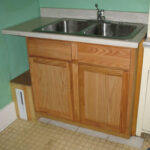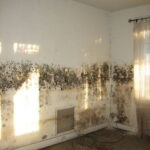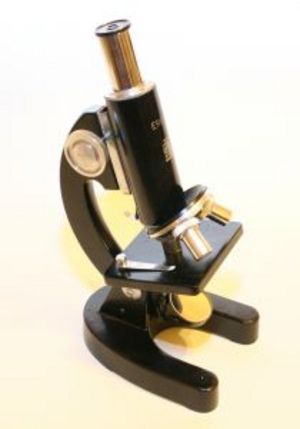When we renovated our bathroom, the small footprint dictated a corner unit for our vanity. We decided to make a concrete vanity top with integral sink for our bathroom renovation. Concrete as a vanity top material has a certain fashion appeal, ease of care, and has gained in popularity. You can cast concrete any shape, color it, and polish it to simulate natural stone at a fraction of the cost. The caveat is it is a labour-intensive process to make the mold for one-off use and it is difficult to polish because the hardness of concrete prohibits the use of common, low-cost aluminum oxide abrasives. For the do-it-yourselfer, silicon carbide abrasives work but professionals are more likely to use the expensive diamond abrasives, an expense we could not justify for a single countertop. We were willing to settle for a less than mirror finish this time around. Another issue with concrete you need to seal it. For a do-it-yourselfer with some experience working with concrete, a concrete vanity and sink is worth the time and effort to design and build the mold, and to polish and seal the countertop and sink.
To fit the footprint, we drafted a countertop design four feet across the front that fits a 90 degree corner. We chose a roughly elliptical shape for the sink outline, about 16 inches measured on its long axis and about 10 inches on its short axis. Our sink has straight sides at 90 degrees to the countertop, rounded at the base on about a two-inch radius. The sink is about 8 inches deep. We used a standard 1.5 inch drain hole in the center of the bottom of the sink. We molded the top to accept a standard set of bathroom faucets. For the backsplash, we decided to tie in the ceramic tile used on the floor and tub surround to give the space added texture and depth.
We selected scrap wood for the primary mold material and particleboard for the base. We designed the mold as an open-casting mold so we could trowel the top smooth. We cut the particleboard to form a four-foot triangle on its long dimension for the corner base and cut the sink profile from it. We extended the sink ellipse profile by 1.5 inches to allow for the thickness of the concrete on the sides of the sink. To complete the mold, we nailed strips of scrap boards around the perimeter of the triangle to form the mold for a two-inch thick top. Around the elliptical hole for the sink we attached a set of faceted sides at right angles to the mold base to hold the concrete for the sides of the sink. We were fussy about the outer shell of the sink since it is not visible except when the vanity door is open. We attached a flat bottom to the sink polygon sides to complete the outer shell of the mold.
After building the mold, we created a core for the sink with an elliptical shape and smooth base curves on the sink interior out of Styrofoam. We built the eight inch deep sink core from layers of 1.5-inch thick high-density Styrofoam sheets. We cut each piece in the stack to the profile of the sink at its depth. We roughly cut the pieces to shape with a band saw and used hot-melt glue to glue the pieces together to form a stack. We then sculpted the form so the core extended to the top of the form boards, flush with the top surface of the countertop. We filled the seams and any tears from sculpting with several coats of drywall compound. We sanded the drywall compound to produce a fairly smooth surface on the core.
The last detail when preparing the mold were the holes for the drain and the faucets. Again, we used Styrofoam. We made cutouts of the proper size and glued them in place with hot-melt glue. Before pouring the concrete, we added scrap 9-gauge reinforcing wire and ¼-inch wire mesh as reinforcing materials.
We mixed the concrete by hand and shoveled it into the mold. We placed a generous layer of concrete for the sink base, and then pressed the Styrofoam sink core into place. To seat it, we wiggled the form. We then forced concrete around the floating Styrofoam core to build up the sink sides. Once done with the sides, we poured the top. We hand vibrated and troweled the concrete to settle it and achieve a smooth top finish.
We let the concrete cure for about three weeks before we removed the forms. Before we started polishing the sink, we filled minor filling of voids with a Portland and water filler mix.
.
We polished the sink with successively finer grits of silicon carbide sandpaper using a palm sander, taking care to wear safety goggles, respiratory masks, and to work in a well-ventilated area. We also kept pets out of the area.
Once we were happy with the sanding, we sealed the sink and vanity with two coats of marine epoxy, sanding between each coat. The thinner topcoat of epoxy produced an attractive, unique and serviceable vanity top and sink. When we totaled material costs for the project, the sink and vanity top cost us less than $75.00 and is something that draws rave reviews from friends whenever they use our newly renovated bathroom. We are working on the molds for our concrete, poured-in-place countertops as our next DYI project.




